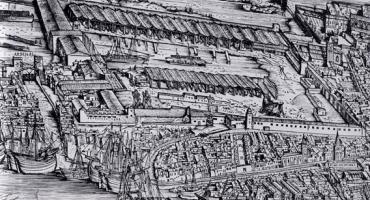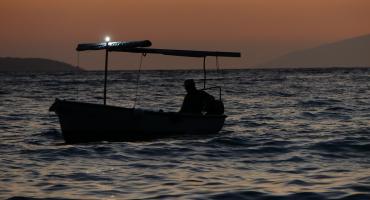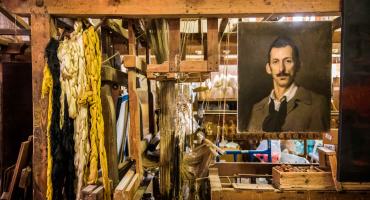The "Paline" and "Bricole" (groups of three or more paline) are wooden poles planted in the lagoon bed. The former are used for mooring boats, while the latter have the essential task of marking the boundary between navigable channels and shallow waters. The regulations governing their use date back to 1493, and little has changed since then.
In addition to their classic uses, the paline have recently been utilized for the construction of furniture and decorative objects. The wood, worn by the water and affected by organisms that feed on it, takes on very interesting shapes and patterns. The sectioned and worked poles have thus been transformed into very suggestive chairs, tables, and bookshelves.
According to an estimate, there are about 90,000 paline in the lagoon. These have always been made from robinia wood, which, despite being very durable, requires constant maintenance. The entity responsible for this costly task is the Magistrato alle Acque, which replaces paline at an overall expense of about 400,000 euros per year.
To address this problem, the search for an alternative material to wood has been proposed, an issue that has immediately created two opposing factions.
The opponents have raised many doubts. Firstly, regarding the economic aspect of the matter, which has created several issues during the assignment of the work. Initially, all companies in the sector rushed to find the best solution and secure this 50-million-euro business. However, while research was already underway, the municipality proposed "a heterogeneous plastic made from recycled plastic waste." According to the entrepreneurs, there is only one company capable of producing this material, and the tender seems to call this company into question too directly. Additionally, the elimination of traditional wood will also eliminate the jobs of those who have always worked in this field. Secondly, replacing wood, a material rich in history and nature, is like uprooting a symbol to replace it with something fake, transforming the nature surrounding Venice into a lagoon of plastic.
The proponents, however, have economic and environmental reasons on their side. Wooden poles placed in water last less and less time (2 years) due to the increase of shipworms, the organisms that feed on them and are increasingly present in the lagoon due to the rising salinity of the water. Plastic poles, on the other hand, are guaranteed for up to 10 years, and even though they cost a bit more, the economic savings are significant. It would also avoid the felling of thousands and thousands of trees every year, removed from the land and planted in the lagoon only to be eaten by the sea and destroyed in a few years. Moreover, the fact that these new plastic paline are made to closely resemble the wooden ones, making them hard to distinguish from a distance, means they do not alter the city's image.
As the first plastic paline begin to appear along the canals, the debate remains heated; it is certain that changing a symbol that has remained unchanged for centuries is no simple task, especially in a city where tradition often holds more value than innovation.
Agata Rotondi | Redazione MeetingVenice



